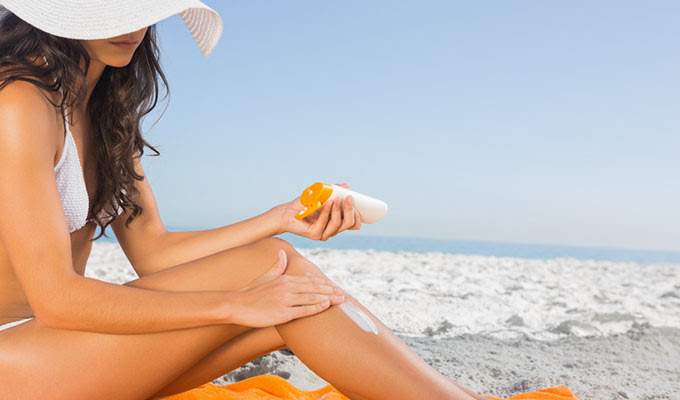Having a bottle of sunscreen in your bag is one of the smartest moves you can make these days, most especially if you love the great outdoors. The product shields you from too much exposure to the harmful UV rays given off by the sun, thus lowering your risk of skin cancer and warding off premature aging signs like wrinkles and liver spots.
Experts recommend that you slather on sunscreen with an SPF of at least 15. Fortunately, you are not going to have a hard time coming across such product these days as more and more people are becoming aware of the dangers of stepping foot outside the home unprotected from the sun. Since sunscreens come in all sorts of forms — lotions, creams, gels, and sprays — it’s for certain that you will find something that perfectly matches your liking.
Alas, not all sunscreens are created equal — some of them contain highly questionable ingredients such as oxybenzone, tetracyclines, parabens and vitamin A palmitate. It’s exactly for this reason why it is a good idea to get the suggestions of your family, friends and most importantly trusted dermatologist.
So what could happen if you apply sunscreen with ingredients that are not entirely compatible with your skin? Here are some of the side effects that you should be on the lookout for after applying your sunscreen:
Rash and Skin Itchiness
A lot of people are allergic to certain chemicals found in sunscreens such as synthetic preservatives and fragrances. Skin redness, inflammation and itchiness are some the most common unfavorable reactions that you may end up with if you mistakenly opt for the wrong sunscreen. Even if the sunscreen you have purchased my say that it’s hypoallergenic, it may still contain some chemicals that you may be allergic to.
The best thing to do before applying sunscreen all over your body is to perform a patch test first by daubing a small amount of the product on the inner part of your upper arm and waiting for 24 hours.
Blisters Around the Hair Follicles
Initially, the application of the wrong sunscreen may cause itchiness around hair follicles. It’s not unlikely for blisters to form, sometimes even the kinds that are filled with pus. Such happens when the hair follicles are irritated by harsh chemicals in the sunscreen, and eventually end up infected.
Before shopping for a sunscreen, check out product ratings and reviews. Your dermatologist is an excellent source of information. Some forms of sunscreens are simply much better on hairy areas of the body. For instance, numerous males with a lot of body hair prefer the use of gel sunscreens as they tend to work better for them than lotions.
Aggravated Acne
Certainly, the application of sunscreen on the face is a wise decision. This beauty move, however, may seem like it tends to do more harm than good if you have acne-prone skin. A lot of sunscreens on the market are known to trigger breakouts in people who are at risk of acne.
Make sure that you hunt for a product that goes very well with your skin type, and most especially one that won’t clog the pores or irritate skin. Cannot seem to find the right one? Skip applying sunscreen on your face altogether and simply opt for other sun protection forms such as the use of a wide-brimmed hat or an umbrella.
Increased Risk of Cancer
People apply sunscreen to ward off skin cancer. But did you know that certain sunscreens may actually put you at higher risk of skin cancer because of the ingredients they contain? It just makes you wonder whether or not you are better off going out in the sun without applying any sunscreen!
In order to save yourself from potentially ending up with deadly cancer, avoid sunscreen that contains vitamin A palmitate that may cause skin cancer, and parabens that may disrupt hormone levels and increase breast cancer risk.












